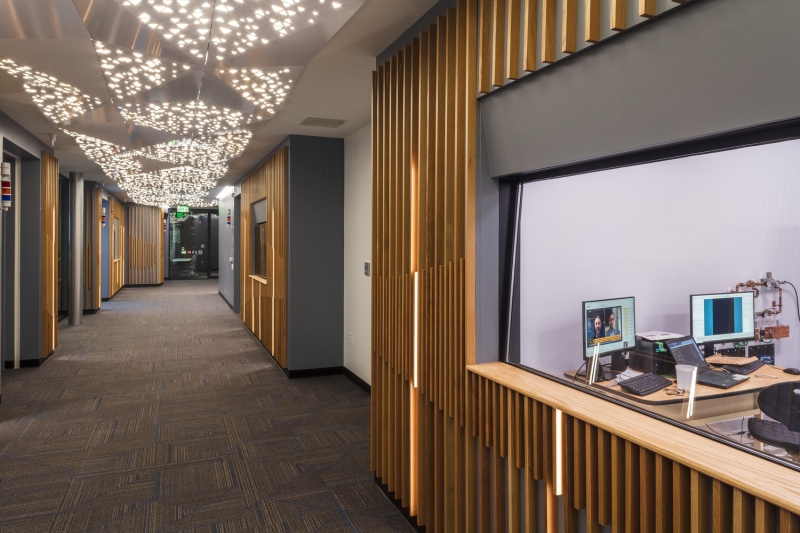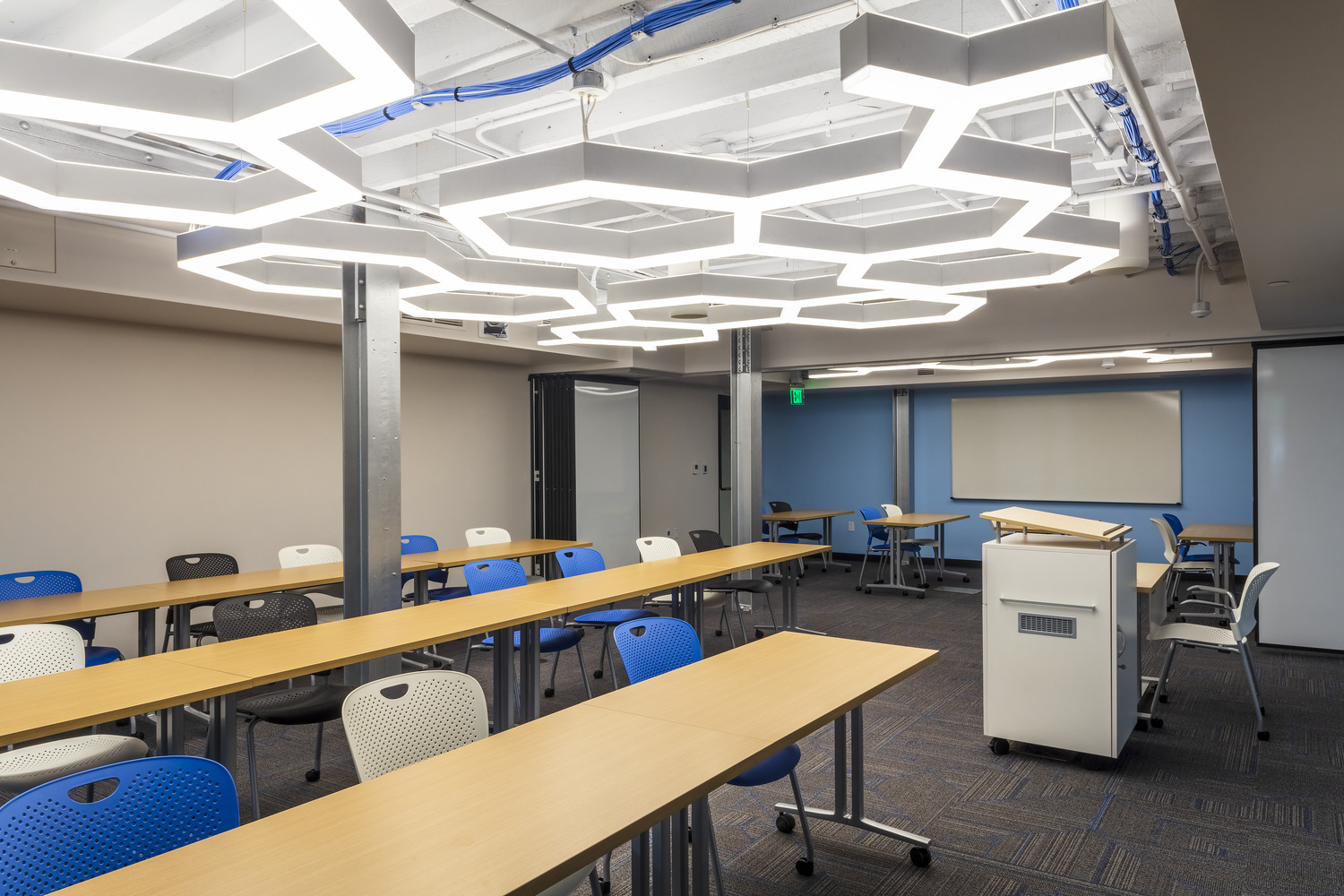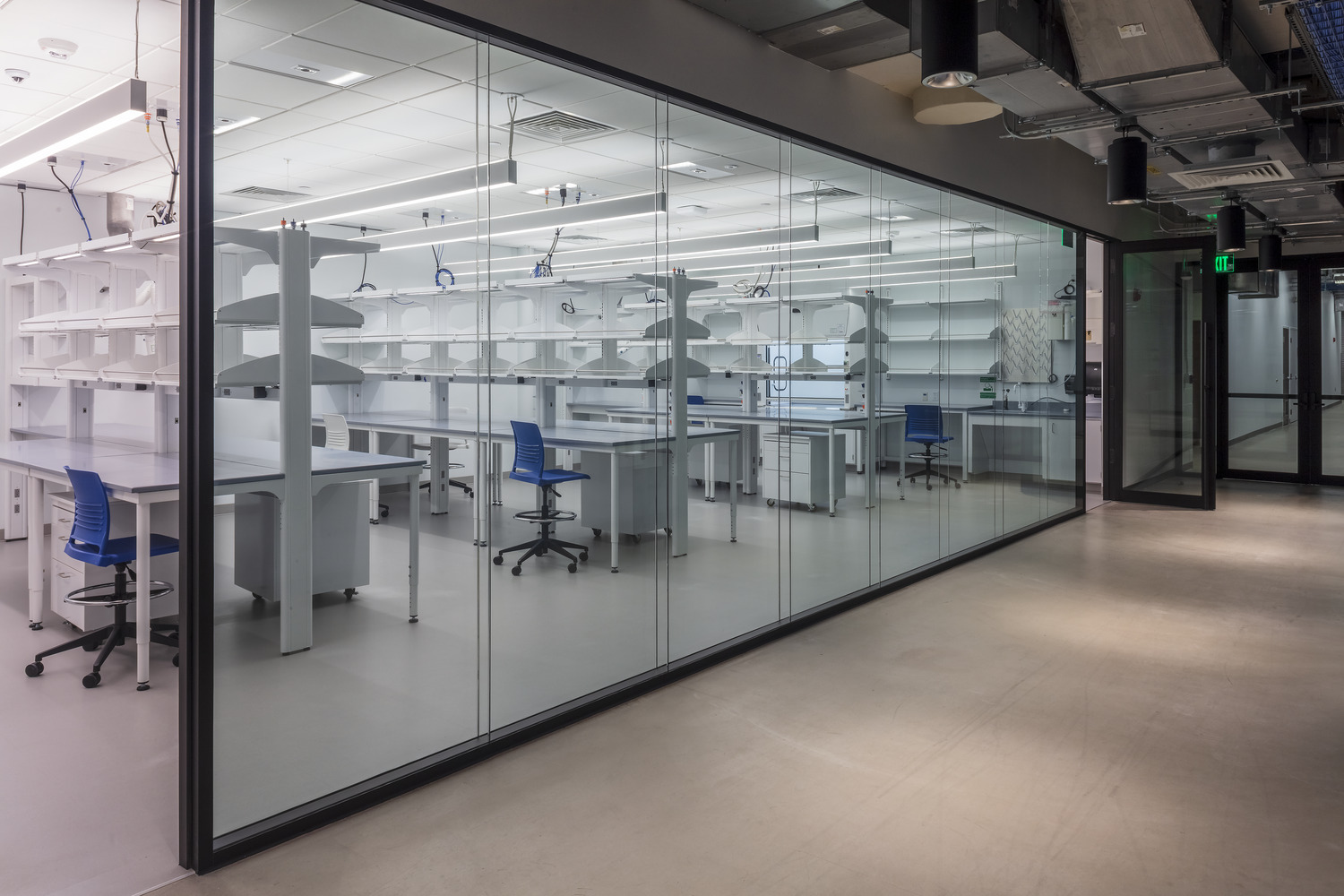 A carpeted corridor leads to instrument rooms within the 1970s addition
A carpeted corridor leads to instrument rooms within the 1970s addition
Housed in the former Stieff Silver complex — a historic 1924 foundry and 1971 warehouse addition — the new Materials Characterization and Processing (MCP) facility at Johns Hopkins Whiting School of Engineering reveals how an existing structure’s character can integrate into a refreshed, modernized concept. In 2018, the university challenged Page architects to design a lab space for specialized instruments used in science and imaging research. It needed to be functional and aesthetically unique, but most importantly, it needed to serve as a singular example of adaptive reuse.
To achieve these goals, our team collaborated closely with the client and contractor until the project’s completion in December 2022. Office spaces (including workstations, classrooms and breakrooms) are located in the 1924 building, while the 1971 addition features 10 specialized instrument rooms. In August 2023, Page received an Honorable Mention – Innovation in 2023 Design Excellence Award from Lab Manager magazine for thoughtfully repurposing the Stieff factory. Here, Page architect and senior academic planner Brian Tucker shares his insight on the project’s transformation.

How did you adapt to obstacles that you faced throughout the project?
We worked in an occupied building during construction — the users on the floor above performed work that could not be interrupted. They had various services running overhead to their space that we relocated at night or on the weekends. It took an amazing amount of coordination. We also had to raise the 1970s structure by one foot. First, we replaced the open bar joists with thick steel beams, then we cut out those deeper joists. The instruments also presented many logistical challenges. For example, if the university buys an instrument from vendor A, they provide a list of room requirements. If the university buys from vendor B, it can be a different list. This makes settling on one design solution difficult.
What was your approach to designing around sensitive instruments?
The university said, “We don't know all the instruments we're going to buy yet. We have some ideas.” We asked, “Can we select three different instruments that you might buy? Then, let's look at their characteristics.” These are serious instruments with stringent requirements. To provide the university flexibility, we developed typologies of space around them — Type 1 were most sensitive, Type 2 were less sensitive, and Type 3 were the least sensitive. Characteristics like electromagnetic interference, vibration, acoustics, and temperature guided our design.

When designing the lab, what was your top priority?
The engineering school challenged us to show that moving into an existing building can be powerful. Sometimes, it’s hard for people to envision how something can be renovated. In the 1924 building, the new office space had this cool riveted steel structure with wooden joists, so we wanted to expose that. In the 1970s addition, the space leading to the instrument rooms is called the quiet corridor. We didn’t want footsteps or noise impacting the rooms, so we put carpet on the floor. The more sensitive instrument rooms don't have windows, so we have control rooms and monitors outside with cameras showing what's inside. We also installed circadian lighting because people could be sitting there running an image for 12 hours or more. These spaces are typically so white and sterile, so a “starry night” ceiling and wood slats add warmth to the space. It's really about the experience walking through the quiet corridor, which is intended to be a showcase.
Describe the interesting design request you received.
In most of the rooms, we needed to incorporate acoustic panels to absorb sound. Normally, that's a flat panel you put on the walls and the ceiling. The lab’s director of operations, who’s a geologist, wanted something different. He showed us an image of a geodesic dome and various rock formations. We came up with a cost effective, one-size sloped panel that can rotate to create that geometric aesthetic. It can also help break up the sound waves easily and quickly. It’s both aesthetic and functional, just like everything in the lab.
